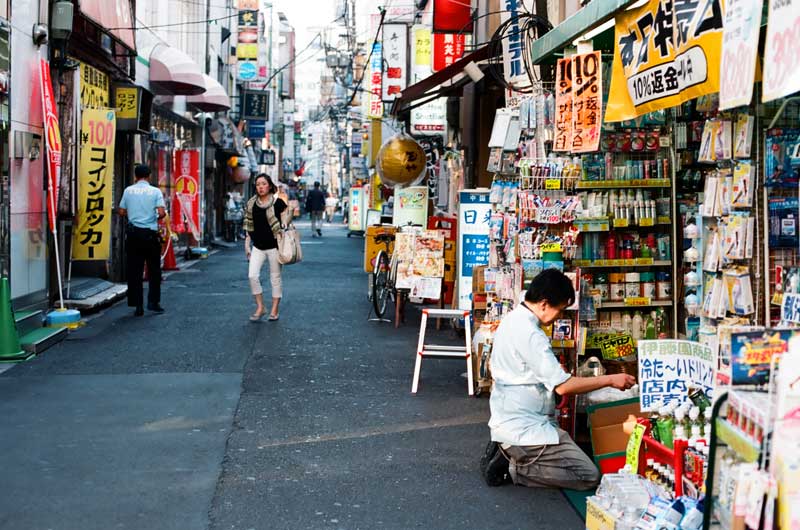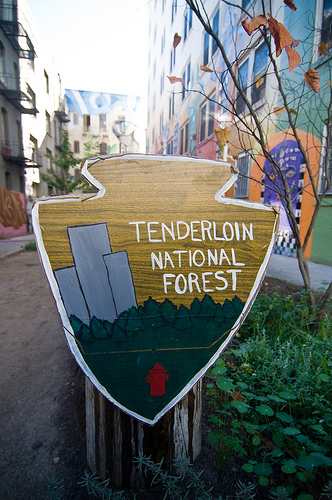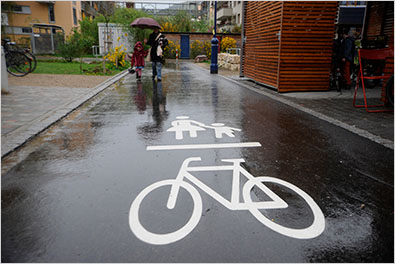
I often find myself biking under this intersection, outside Opera City in Hatsudai. The surface roads are wide and congested, and there’s also a newish underground expressway. This is a major corner not designed for bicyclists or pedestrians.

Compared to the last photos, this narrow street in Shimbashi, an older business district that’s no longer Tier A real estate, allows pedestrians to take full use of the street and offers an amazing variety of products, signs and even foods spilling out of the shops.

In one of the densest, poorest and most dangerous San Francisco neighborhoods, a university class and an art gallery have created what they dub the Tenderloin National Forest. A San Francisco State University class and The Luggage Store Gallery have created a much needed green space, and appropriated the name and logo of the national forest service.

On the other side of the Atlantic, class spectrum and new versus old developments, today I also read about Vauban, a new suburb in Germany that puts cars in collective garages on the periphery and devotes its narrow alleys to pedestrians and bicycles. It is a new development on an old military base, connected to the city of Freiburg by tram. And it is planned to reduce global warming and to improve the residents’ quality of life.

The funny thing is that this new suburb’s street priorities are not that different than most of residential Tokyo.